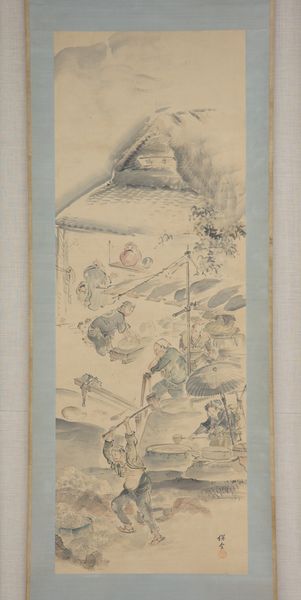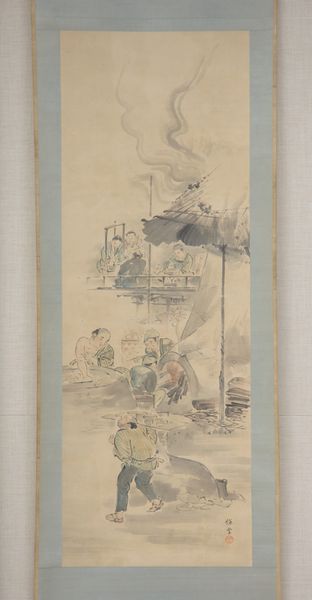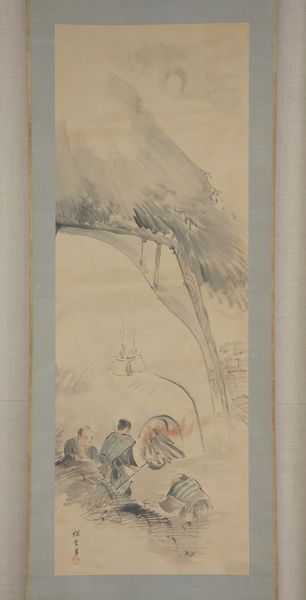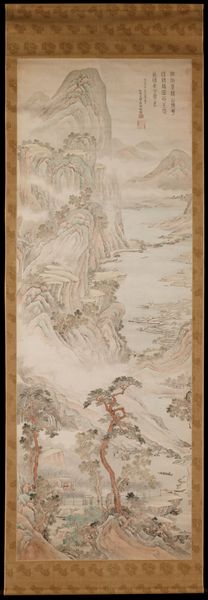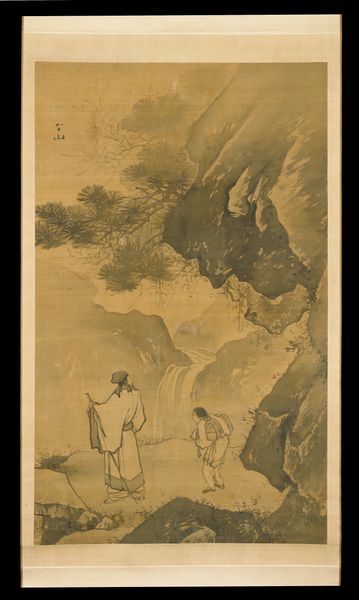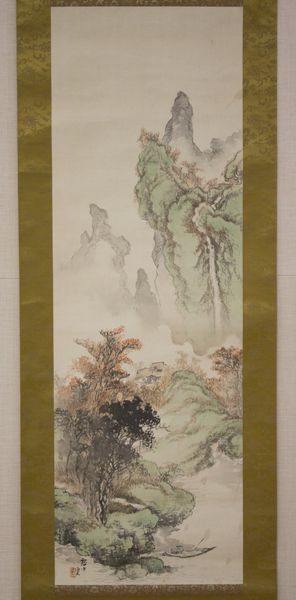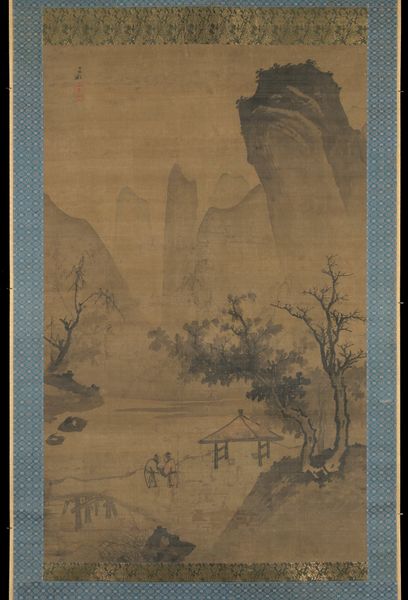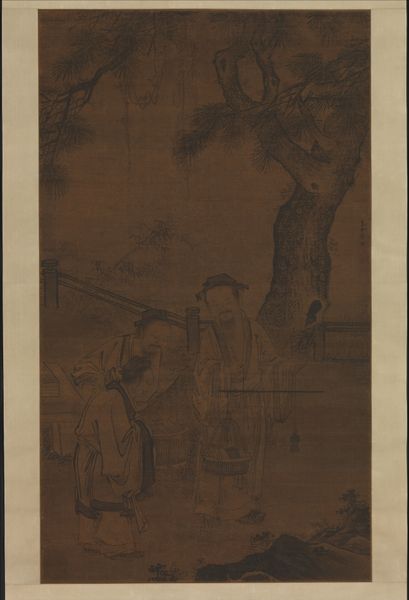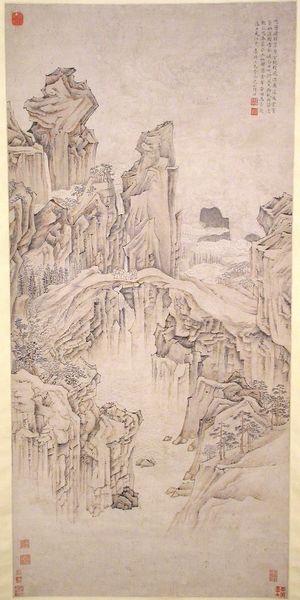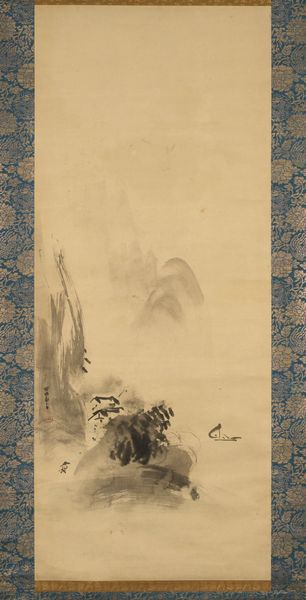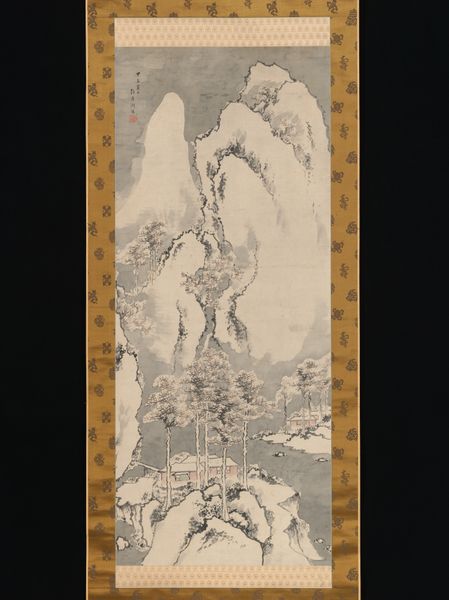
painting, watercolor
#
water colours
#
painting
#
asian-art
#
landscape
#
japan
#
figuration
#
watercolor
#
underpainting
#
men
#
genre-painting
#
watercolor
Dimensions: Overall: 47 1/2 x 16 7/8 in. (120.7 x 42.9 cm) Overall with mounting: 67 x 21 3/4 in. (170.2 x 55.2 cm) Overall with knobs: 67 x 23 3/4 in. (170.2 x 60.3 cm)
Copyright: Public Domain
Editor: Here we have "Making Ceramics" painted with watercolors between 1800 and 1854 by Eiraku Hozen. It’s a beautiful genre scene and yet…it almost feels unfinished. What exactly am I looking at? How would you interpret this work? Curator: It's interesting that you say unfinished. It evokes the pre-industrial era in Japan and, as historians, we can look into its socio-political meaning. What kind of purpose could it serve in society? Editor: Well, since it’s displayed at the MET now, you could say its purpose is to inform people about traditional ceramic-making practices in Japan during the Edo period! It could educate people in the future too. Curator: Precisely! Art provides a view of production as a community endeavor. I wonder, what does seeing labour represented this way do for contemporary audiences in a world where objects seem to materialize as if by magic? Editor: I guess it can reveal all the unseen work. But, even though the figures seem to be the central focus, I find my eyes drifting to the background, to these monumental archways… do they add any cultural context or historical perspective? Curator: The archways could represent transformation. Kilns could transform earth to a lasting piece of functional art and tools. In its own way, this artwork captures its own process. Editor: I hadn’t thought of that parallel! That shifts my understanding quite a bit, from a simple snapshot of labour to a reflection on craft and society. Curator: The museum gives pieces like these visibility for cultural and art enthusiasts and history students to study and gain insights into the history and politics behind their art. Editor: It’s amazing to realize the many layers of significance behind this painting now, more than just a beautiful scene! Curator: Indeed. It is crucial for us to think about how art gains meaning as it is displayed and re-interpreted over time.
Comments
No comments
Be the first to comment and join the conversation on the ultimate creative platform.
